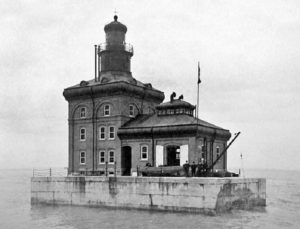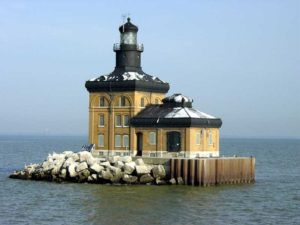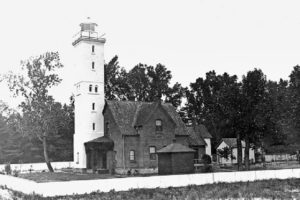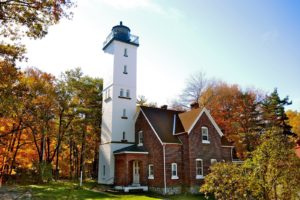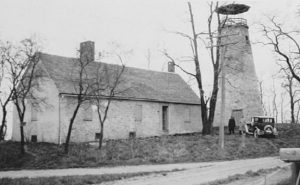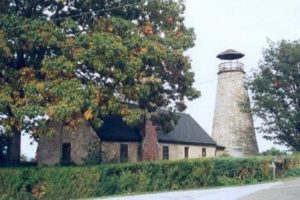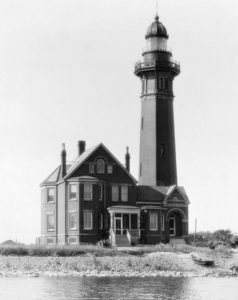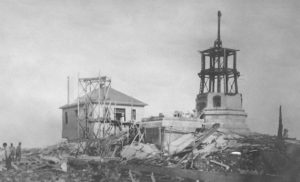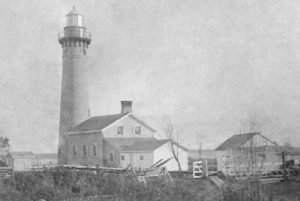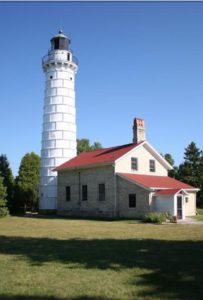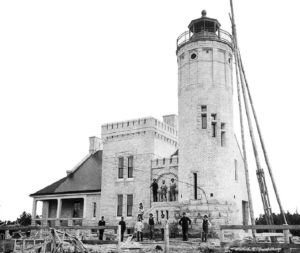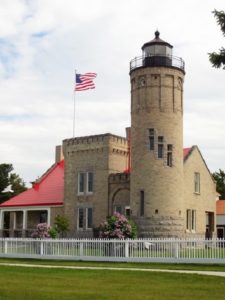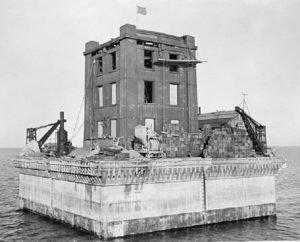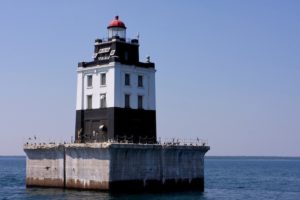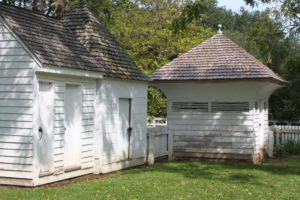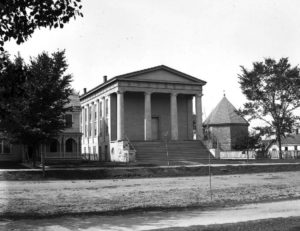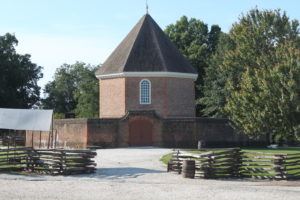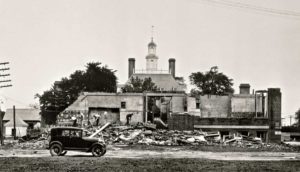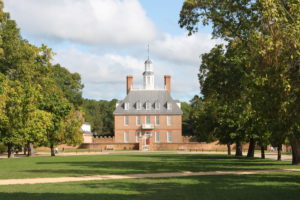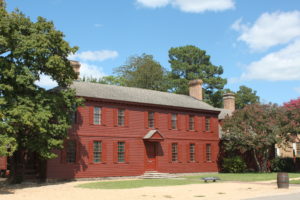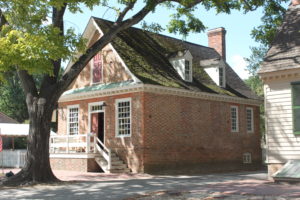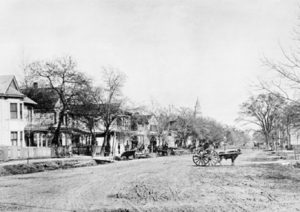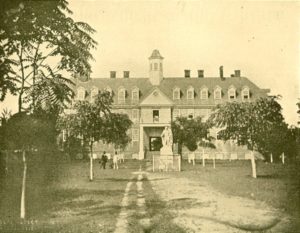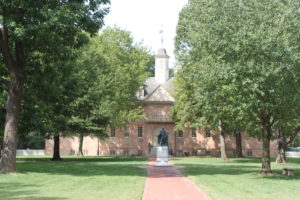Toledo Lighthouse is located in Lake Erie, eight miles NE of Toledo Harbor. It was finished in 1903 and had an electrified, rotating light installed in 1966. While people were no longer needed to man the facility, a uniformed mannequin was placed in a window to preclude vandalism. In 2003 there was a centennial celebration capped off with completion of a $1,500,000 renovation. The first photo is dated 1911.
Presque Isle Lighthouse
Also in Lake Erie (although in Pennsylvania), Presque Isle Lighthouse opened in 1873. The keeper and family had to walk 1.5 miles from the Lighthouse to a boathouse at the appropriately named Misery Bay. From there it was a lengthy row followed by more walking to the town and school. The Lighthouse was opened to the public in 2016, hosting 30,000 visitors, 13,500 of which paid to climb the 40-foot tower. The first photo is dated 1911.
Barcelona Lighthouse
Another Lighthouse located on Lake Erie, near the town of Westfield, NY, is the Barcelona Lighthouse, which was built in 1828. It was the first to use natural gas as the source of illumination and did so until 1851. The Lighthouse was removed from service in 1859, but remained a tourist attraction. It was in private hands for over 100 years and then became part of NY Parks and Recreation in 2008. The first photo is dated 1904 and makes you wonder what would attract a tourist. The second photo is dated 1926.
Braddock Point Lighthouse
Located in Lake Ontario in New York, Braddock Point Lighthouse looks a lot like Presque Isle except the tower is twice as tall. It was finished in 1896. In 1926 a newspaper article estimated the keeper’s twice daily trips up and down the tower totaled about 700 miles during his 20-year tenure. In 1952 the tower’s top half had to be removed due to structural damage. The Lighthouse was a B&B from 2008-2016 and is now on the market for $1,500,000. The first photo is dated 1933.
Split Rock Lighthouse
Split Rock Lighthouse is located in Minnesota on the west edge of Lake Superior. It was built in 1910 with all materials having to be brought in by boat. It was de-commissioned in 1969 and the site was donated to the Minnesota Historical Society, which restored it to its 1920 appearance. Split Rock Lighthouse is the most popular historical site in Minnesota, averaging 116,000 visitors annually. The first photo shows it nearing completion.
Cana Island Lighthouse
Built in 1869, Cana Island Lighthouse is located on a nine-acre site on Lake Michigan in Door County WI. It was frequently battered by severe storms, so much so that, after 16 years, one keeper left saying it was “one of the most inhospitable and undesirable places that can well be imagined.” In 1902 the tower was completely encased in steel plating. It is now the Door County Maritime Museum. The first photo is dated 1893.
Old Mackinac Point Lighthouse
“Old Mac” was built in 1892 in Mackinaw City, MI. where Lakes Michigan and Lake Huron meet. Completion of the Mackinac Bridge in 1957 rendered the Lighthouse obsolete since the Bridge had lights. It is now a popular tourist attraction. The first photo shows it nearing completion.
Poe Reef Lighthouse
Although Poe Reef Lighthouse is located about 20 miles from Old Mackinac Point Lighthouse, it is much more remote. It lies completely in Lake Huron about two miles off shore. It was built in 1929 and frequently had waves hit its base sending water up as high as the 4th floor. It was decommissioned in 1974 and is up for auction — opening bid $10,000. The first photo shows the Lighthouse nearing completion.
Notice
I recently discovered an error in uploading photos which kept them from being enlarged dating back to February 2016. I have corrected this and all photos are once again enlargeable.
Williamsburg Virginia
Here are three 18th century outbuildings at the Grissell-Hay house. From left to right they are a privy, a smokehouse, and a dairy. Judging by their appearance in this 1920’s photo, work began just in time. Restoration was done using almost all original materials.
Built in 1715, the powder magazine stored arms and ammunition during Colonial times. It was later used for the same purpose by the Confederates during the Civil War. It was also a dancing school, then a livery. The outer wall was demolished in 1856, just before restoration began, to make room for a Greek Revival church, seen in this 1934 photo.
The Governor’s Palace was built in 1706 and burned in 1860. It was rebuilt on the original foundation in 1930 following demolition of a school shown in this photo.
The Payton Randolph house was built in 1716 and was subsequently altered several times. Randolph was Speaker of the House of Burgesses and President of the First Continental Congress. When Randolph died, Thomas Jefferson bought his extensive book collection, which, in turn, was purchased by the government and became the beginning of the Library of Congress. The first photo is dated 1870.
The Prentis store was built in 1739 and is the oldest surviving commercial building in Colonial Williamsburg. It was once used as an auto service station as seen in this 1927 photo.
Here is a view of the Duke of Gloucester Street from the west end taken in the 1890s.
The Wren Building at the College of William and Mary was built in 1697. It is the oldest academic structure in continuous use in America. It had many alterations following severe fires in 1705 and 1859 as well as damage in the Civil War. Here is the earliest known photo of the Wren Building–an 1856 daguerreotype.


